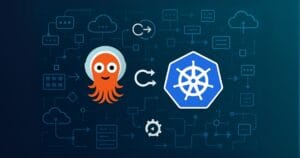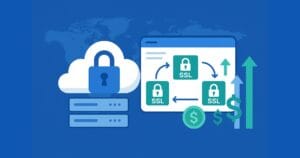Key Takeaways
- The Apple Xserve, launched in 2002, has seen continuous double-digit growth in server sales, drawing interest from sectors outside Apple’s traditional niches such as academia, government, and science.
- The Xserve’s OS X architecture integrates well with other operating systems, positioning it as a serious Intel alternative for web application and site hosting for web professionals.
- The Xserve is equipped with a robust list of ready-to-run applications, including Apache, Cyrus, FTP, JBoss Application Server, Mailman mailing list software, MySQL, OpenSSH, OpenSSL, Perl and PHP, Postfix MTA, Squirrel Mail for webmail, and Tomcat by Apache.
- Apple Xserve is extensible, allowing connection to the Xserve RAID, which provides up to 5.6 terabytes of storage per system, at prices ranging from $6,000 to $15,000, undercutting the price of similar solutions on other platforms.
The Apple Xserve launched in 2002 without much fanfare in the server marketplace. Two full years later, the platform is gaining more steam than even avid Apple watchers had anticipated.
The past year has rewarded Apple with continuous double-digit growth in server sales. While the numbers (north of 11,000 per quarter) are only a fraction of the sales figures boasted by HP or Dell, they do reflect a profit in the balance sheets as Xserve draws interest from corridors outside Apple’s traditional niches in the academic, government, and scientific sectors.
Amid the buzz caused by the company’s successful entrance into high performance computing and the Top500 Supercomputer list, Apple engineers have also quietly built a serious Intel alternative for Web application and site hosting for Web professionals. However, this was not done without consideration of the share of Intel servers in use. One of the signatures of Xserve and its underlying OS X architecture lies in its integration capabilities with other operating systems.
A Slice of History
While Apple’s first foray into the server market in 1997 was a spectacular failure by way of Network Servers that ran AIX 4, the introduction of OS X in 2000 and the later rollout of the G5 PowerPC processor from IBM present strong arguments for its adoption now.
Not known for being a server-side company, Apple representatives confirmed that the company took its efforts to penetrate the enterprise market very seriously and spoke to hundreds of companies during product development. This approach resulted in the creation of a powerful server with many conveniences ready-made for Web hosting.
A Look Inside
The ability to drop an Xserve into a Web hosting network with little or no disruption is probably the first and most visible benefit of its use. However, before we explore the underlying software, a glance at the hardware specifications shows the heated competition the Xserve uses against competitors such as Dell, HP and IBM.
Recent IDC research shows that more than half of Linux server deployments are dual processor-based as heavier application loads are being carried. Considering the fact that many Web hosts run multiple domains offering database-driven sites with forums, storefronts and more, the configurations below reflect this trend.
The Intel Cost Comparison

*Each server was configured to the closest possible similar configuration at the online stores of each manufacturer aside from processor architecture.
The Software Myth Debunked
The argument for lack of software on the Apple platform no longer holds traction. With its entrée into open source via OS X’s BSD UNIX underpinnings, the vast universe of applications Web developers know so well can now be leveraged on Apple hardware. OS X’s Panther server runs so closely parallel to Linux servers that a majority (if not all) of popular applications requiring a LAMP (Linux, Apache, MySQL and a Perl/PHP) environment run on demand on the Xserve.
The default package delivered on the hardware includes:
- Apache 1.3.x and 2.x
- Cyrus (IMAP and POP)
- FTP
- JBoss Application Server (for Enterprise Java Beans)
- Mailman mailing list software
- MySQL
- OpenSSH
- OpenSSL
- Perl and PHP
- Postfix MTA (SMTP)
- Squirrel Mail for webmail
- Tomcat by Apache for Java Server Pages and Servlets
- Traditional scripting environments for CGI, Perl, Python, Ruby and shell specific scripting
Most prominent in this list are several difficult-to-configure applications that come ready to run once the system is powered up, potentially saving developers time in compilation and configuration.
In this new era on the Web, where streaming and media services are almost as important as database development, the inclusion of QuickTime Streaming Server should raise a few eyebrows. This inclusion provides developers the ability to handle MPEG-4, MP3, AAC, and RTP/RTSP formats. While some may groan at the mere mention of QuickTime, this application is now the core standard for the next generation of video encoding (H.263), and is fast becoming the primary codec vehicle for the provision of audio/video services to mobile devices — a direction in which many interactive Web developers are now heading.
Controlling OS X Server on Xserve
Panther Server (10.3) has a built-in System Administrator-friendly set of control panels that allow configuration of all elements of the system. These include a fairly comprehensive Apache configuration application, which offers the ability to set up password-protected realms for users and groups.
The included setup tools for SSL should also be crowd-pleasers, as they provide visual cues for configuring secure sockets layer for Websites.
Delving deeper into individual application configuration is quite easy for experienced administrators, who can use either the Terminal (using the Bash shell), or a third-party tool like Webmin, which runs nicely on OS X and provides root level control over Apache, MySQL, mail servers, firewalls and more.
For larger deployments, Apple has created a bulletproof integration into Open LDAP and Microsoft’s Active Directory. This includes granular user management and can be leveraged nicely for complex intranet or extranet sites.
Taking it to the Next Level
For those with big projects and massive storage needs (and robust budgets to match), Apple has made the Xserve extensible, to allow connection to the Xserve RAID, which can now provide up to 5.6 terabytes of storage per system. Though the prices are premium — ranging from $6,000 to $15,000 — they continue to undercut the price of similar solutions on other platforms.
Exploring the Xserve Further
With any potential shift in platforms, extensive research needs to be completed to allow decision-makers to select a sound solution. Apple has gone to great lengths to provide functional documentation for the varying solutions for which Xserve can be implemented. By spending some time on the Apple site, one can answer most, if not all questions on the capabilities of this hardware/software combo for development and production use on the Web.
A particularly good PDF overview of the included software capabilities is also available.
A Final Note
I had the opportunity to perform some hands-on evaluation of the G5 Xserve and Xserve RAID earlier this year, and as I come from a Linux background, the similarity was clear. The process of moving from a Linux on Intel architecture to OS X on Xserve is fairly straightforward. The bonus of a proven media server and the ability to continue to dual run Linux (by way of Yellow Dog Linux, a Fedora fork) alongside OS X made the solution even more appealing.
I have since started moving several production sites onto the Xserve platform without difficulty. I also must admit that I had wrestled with Mailman, in particular, in the past and am relieved to be having a simple and straightforward experience with it now!
Frequently Asked Questions about Apple Xserve
What is the history and evolution of Apple Xserve?
Apple Xserve was first introduced in 2002 as Apple’s first dedicated server hardware. It was designed to be rack-mounted, which was a common feature in servers. Over the years, Apple released several versions of Xserve, each with improved specifications and features. The last version was released in 2009, and in 2010, Apple announced that it would discontinue Xserve. However, Apple continued to support Xserve users until January 31, 2011.
What are the key features of Apple Xserve?
Apple Xserve was known for its high-performance server architecture, which included Intel Xeon processors, ECC memory, and up to 3TB of storage. It also featured an unlimited client license for Mac OS X Server, remote management capabilities, and a 1U rack-optimized enclosure. Additionally, Xserve had built-in tools for server configuration and management, making it a user-friendly option for businesses.
How does Apple Xserve compare to other server hardware?
Compared to other server hardware, Apple Xserve was unique because it was designed specifically for Mac OS X Server. This meant that it offered seamless integration with other Apple products and services. However, compared to other server hardware, Xserve was often considered more expensive, and it lacked some of the customization options available with other server hardware.
What is the current status of Apple Xserve?
Apple discontinued Xserve in 2011, and it no longer sells or supports the product. However, many businesses and organizations continue to use Xserve because of its robust features and capabilities. There are also third-party companies that offer support and maintenance for Xserve.
What are some alternatives to Apple Xserve?
Since Apple discontinued Xserve, businesses have had to look for alternatives. Some have chosen to use other Apple products, like the Mac Pro or Mac Mini, as servers. Others have switched to different server hardware entirely, such as Dell PowerEdge or HP ProLiant servers. The best alternative depends on a business’s specific needs and requirements.
Can I still buy Apple Xserve?
While Apple no longer sells Xserve, you can still find used and refurbished units for sale from third-party sellers. However, keep in mind that these units are no longer supported by Apple, so any maintenance or repairs would need to be handled by a third-party company.
What operating systems can run on Apple Xserve?
Apple Xserve was designed to run Mac OS X Server, but it can also run other operating systems. This includes various versions of Linux and Windows Server. However, running a non-Apple operating system on Xserve may require additional configuration and setup.
How can I manage and configure Apple Xserve?
Apple Xserve comes with built-in tools for server configuration and management. This includes Server Monitor, which allows you to monitor the status of your Xserve remotely, and Server Admin, which provides a graphical interface for managing services and settings.
What are the specifications of Apple Xserve?
The last version of Apple Xserve, released in 2009, featured Intel Xeon processors, up to 48GB of ECC memory, and up to 3TB of storage. It also included a dual-layer DVD drive, two PCI Express 2.0 slots, and dual Gigabit Ethernet ports.
What is the future of Apple Xserve?
While Apple has discontinued Xserve, it continues to offer server capabilities through its other products. For example, the Mac Pro and Mac Mini can both be used as servers. Additionally, Apple offers server software through the Mac App Store, allowing businesses to turn any Mac into a server.







